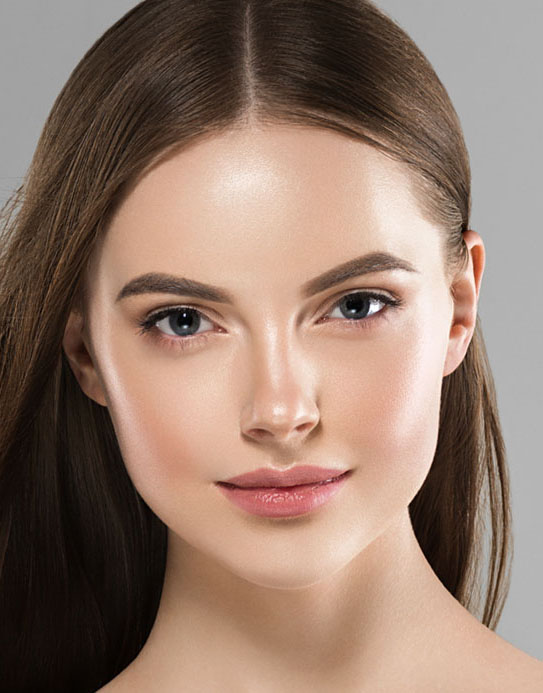
RESTYLANE, JUVEDERM & VOLUMA
The hyaluronic acid (HA) family of fillers includes Restylane, Juvederm, and Voluma. These are injectable gels that are used for the cosmetic treatment of facial creases, wrinkles, etched lines, and volume loss. These products can improve lines around the mouth, nose, and lips or sunken cheeks or temples by filling in the creases or depressed areas, softening and improving their appearance. This filling-in is temporary, but prolonged improvement may be seen for up to 9-24 months, depending on individual responses, area filled, and material used.
Restylane was approved in 2004 by the Food and Drug Administration (FDA) for the treatment of nasolabial folds. Juvederm Ultra was approved in 2006 by the FDA for similar use. Both products are used for mild to moderate wrinkles and are placed in the upper-to-mid dermal layer of skin to achieve their effect. They have been widely used for cosmetic treatment of other wrinkles and creases around the nose, mouth, and in and around the lips. Larger-particle formulations of hyaluronic acid called Perlane (similar to Restylane) and Juvederm Ultra Plus (similar to Juvederm Ultra) are used for mid-and deeper dermal filling for volume enhancement. A newer HA material, Voluma, was FDA-approved in 2013 and is used for deeper volume replacement in the mid face, cheekbone, and temple regions. Options for alternative treatment include injection of other fillers, such as Radiesse, Sculptra, or fat transfer. Restylane and Juvederm are essentially interchangeable, although each has slightly different qualities and patient preference. Some treatment zones are currently considered an “off-label use”. There are several other filler substances that are available but are not yet FDA-approved or do not have as good a safety profile as the HAs.
Significant complications or allergic reactions are rare with these filling agents, no skin testing is required. More common local reactions include but are not limited to swelling, redness, bruising, pain, itching, skin discoloration, tenderness, and lumpiness at the implant site. Bruising can last 2-10 days (average 5 days). To minimize bruising avoid aspirin, aspirin-containing medications, other non-steroidal anti-inflammatory medications, and other blood “thinners” (including Vitamin E, ginkgo, ginger, and ginseng supplements) for 7-10 days prior to injections. Rarely severe swelling can occur minutes to hours later (not an actual allergic reaction to the material itself). Prednisone is used to treat this condition, which usually resolves in 1-3 days. Oral anti-histamines like Claritin, Allegra, or Zyrtec can be used prior to and after injections to lessen post-procedure swelling. In addition to oral antihistamines, we suggest ice packs and head elevation for the first 12-24 hours after filler treatment to minimize swelling, redness, and discomfort. Arnica tablets (either alone as 12c or 30c dissolvable tablets or combined with oral bromolain) may be helpful to minimize bruising and swelling. If you have a history of cold sores or lip herpes simplex episodes, please premedicate with an oral anti-herpes medication (e.g. Valtrex) the day prior and for 3-4 days following your procedure.
The injection of all of these implant materials is variably uncomfortable. We recommend pretreatment with a topical anesthetic cream or gel (we use BLT mixture of betacaine, lidocaine, and tetracaine) about 50-60 minutes prior to your treatment. Please follow the detailed instructions to properly apply this anesthetic cream for optimal effect. If you think filler treatments are something you may be interested in, please schedule a consultation with Dr. Ruth Treiber to discuss your individual needs and therapeutic options to help you decide if this treatment is right for you.


 My appointment with Dr. Treiber went very well. She was polite and very knowledgeable, both myself and my son had appointments. She was amazing in dealing with his eczema and prescribed him something that finally made him stop scratching! Much appreciated!
Billy Wong Chin
My appointment with Dr. Treiber went very well. She was polite and very knowledgeable, both myself and my son had appointments. She was amazing in dealing with his eczema and prescribed him something that finally made him stop scratching! Much appreciated!
Billy Wong Chin